- Animal Testing
- Beef
- Chicken
- Circuses
- Dairy
- Dissection
- Donkeys
- Down
- Eggs
- Foie Gras
- Fur
- Honey
- Hunting
- Lobster
- Pork
- Seal Hunt
- Turkey
- Wool
- Zoos
Zoos
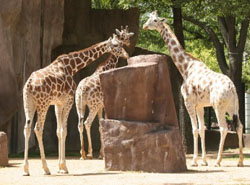
Almost all of us grow up with fond memories of visiting the zoo with our parents, grandparents or friends. Where else do you get to see those amazing, large elephants? Or these cute monkeys climbing and playing? Or those giraffes with their long necks? Unless you are able to afford a trip to Kenya, the zoo is the only place where you can see these amazing animals up close.
However, I wouldn't have listed zoos under Animal Cruelty, if I didn't think that they were bad for the animals that live in them.
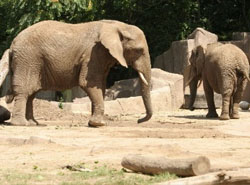
Enclosures
The major problem with zoos is that the animals who live there are kept in enclosures that don't allow them to live their lives in a natural way. No matter how big some zoos try to make the enclosures, no matter how many branches they put in them, no matter how beautiful they make the background paintings on the wall, they don't compare with the natural habitat the animals were meant to be in. Zoo animals have to spend day after day, week after week, year after year in the exact same enclosure. This makes their lives very monotonous.

Elephants in the wild, are used to traveling many miles a day in herds of about ten related adults and their offspring. They are very social animals.
In zoos, elephants are usually kept in pairs or even isolated. Their enclosures are incredibly small, compared to what they are used to in the wild. Elephants often show many signs of being stressed out or bored, like engaging in repetitive movements.
It is no surprise that elephants don't do well in zoos at all. The average lifespan of zoo elephants is about 16-18 years, while wild elephants can live 50-70 years.
Stress behaviors
It's not always easy to recognize stress behaviors, since most of us only know these wild animals from seeing them in zoos. Stress behaviors can include repetative movements, pacing back and forth, head bobbing, rocking, repeatedly retracing their steps, sitting motionless or biting the bars of their enclosure or themselves.
The bored cheetah in this video is pacing back and forth, a very common stress behavior in zoo animals.
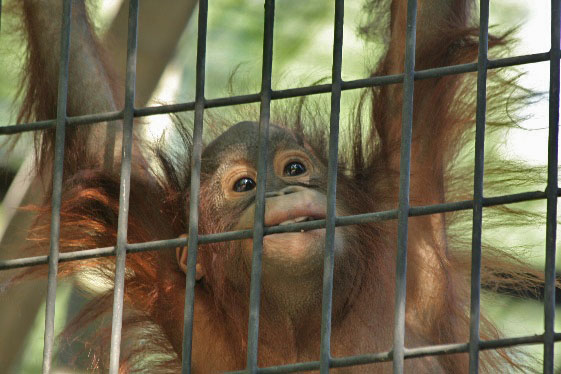
Abnormal Repetitive Behavior
The scientific term for repetitive behaviors in captive animals is "Abnormal Repetitive Behavior" also know as ARB. This covers all the strange-looking repetitive behaviors we can recognize in captive animals, like zoo animals. These behaviors are caused by conditions like depression, boredom and psychoses. Some zoos actually give anti-depressants or tranquillizers to control the behavior problems of some of their animals.
The following clip shows an elephant at the Milwaukee County Zoo in the summer. She is swaying her trunk back and forth, which is a sign of stress. This stress behavior is difficult to recognize, which is obvious at the end of the clip when you hear a woman say: "if I could just do that all day, man that would be pretty sweet."
The following clip shows an elephant at the Milwaukee County Zoo in the winter. She spends almost the entire day in this small, concrete enclosure and is showing obvious signs of stress. I would walk away from the elephants to come back an hour later, and she would still be performing these same repetitive movements.

Zoo: Collection of Unhappy Animals
What makes life so difficult for zoo animals is that they hardly have any privacy and lack mental stimulation and physical exercise. Even though you might think that zoo animals would get used to a life in captivity, they really don't. Even animals that are bred in zoos still retain their natural instincts after many generations of captive breeding.
Animals like polar bears or felines are used to hunting; this habit is replaced by the zoo with regular feedings. Most animals kept in zoos would naturally roam for tens of miles a day.
Once you start recognizing the signs of stress in zoo animals and understand how sad and boring their lives must be, zoos will look completely different to you.
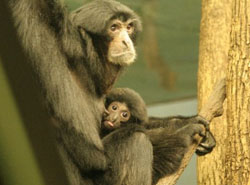
Conservation
Zoos claim to help with conservation. However, hardly any zoo registers their animals on an international species database and most zoo animals are not endangered at all.
Even though there are thousands of endangered species, zoos have only been able to return about 16 species to the wild with varying level of success. Most zoo animals released in the wild don't survive. This is because zoos don't provide the right environment for a successful captive breeding project. The animals would need to live in habitats resembling their natural ones, especially in terms of climate and fauna. The animals would also need to be raised with minimal human contact and in populations large enough to provide a natural social balance and a suitable gene pool.
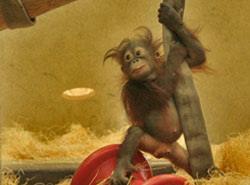
Breeding Programs
Zoos spend huge amounts of money on their breeding programs, even though breeding animals in captivity isn't the best way to help in conservation. It is at least 50 times more expensive to maintain elephants in zoos than to protect equivalent numbers of elephants in the wild. Using the money for conservation programs in the wild - by creating more protected reserves for instance - will not only allow the animals to live in their natural habitat, it also helps balance whole eco-systems.
Zoos main interest in breeding programs, is to attract visitors, who love to see baby animals.
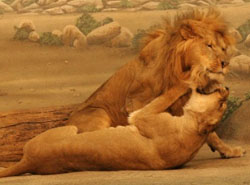
Surplus Animals
Surplus animals are the unwanted animals for whom there is no more space, when zoos have bred yet another cute little baby to attract visitors. They can even be the cute babies themselves when they've stopped being cute at the end of the season. Zoos have a systematic "overproduction" of animals. These surplus animals are either killed - and sometimes fed to their fellow zoo habitants - or sold to other zoos or dealers.
Selling animals is a profitable way for zoos to dispose of them. Dealers will sell them to hunting ranches, pet shops, circuses, the exotic meat industry, and research facilities. Surplus animals are also found for sale on the internet.
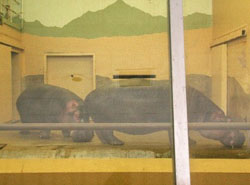
Teaching Tool
Zoos are considered a great teaching tool where children and adults can learn a lot about wild animals. Zoos however, hardly teach you anything about how wild animals live and behave in nature. Just compare the picture of the hippopotamuses in nature (to the right) with the one at the zoo (below). Zoos are not much more than a collection of sad and exploited animals and are giving a very bad example about how we should treat these fellow occupants of our Earth.

What is the Alternative?
So if we shouldn't visit zoos, how else can we learn about these amazing animals?
Animals should be observed in their natural habitat, where they are living the life that they were meant to live. If we can't afford to visit them, we can learn about these amazing wild animals by watching wildlife videos, television programs or by reading about them on the internet or in books and magazines. It is simply not right to enjoy seeing these animals while they are living a horribly sad life.

